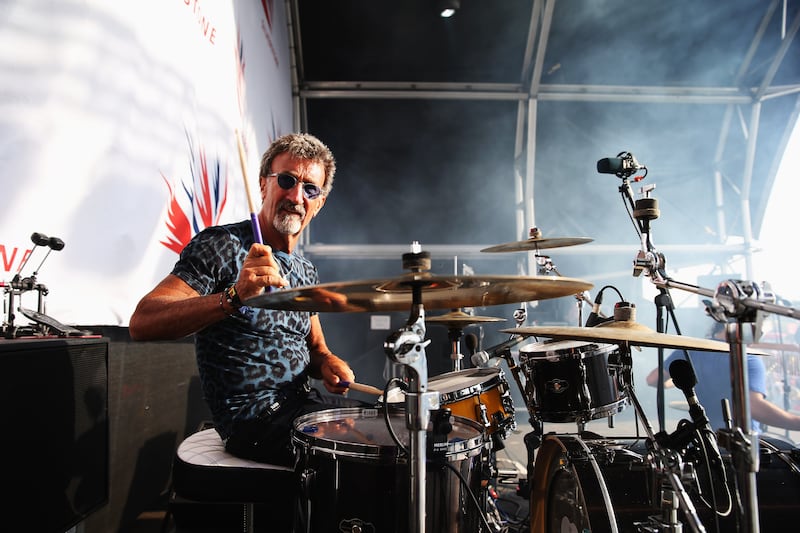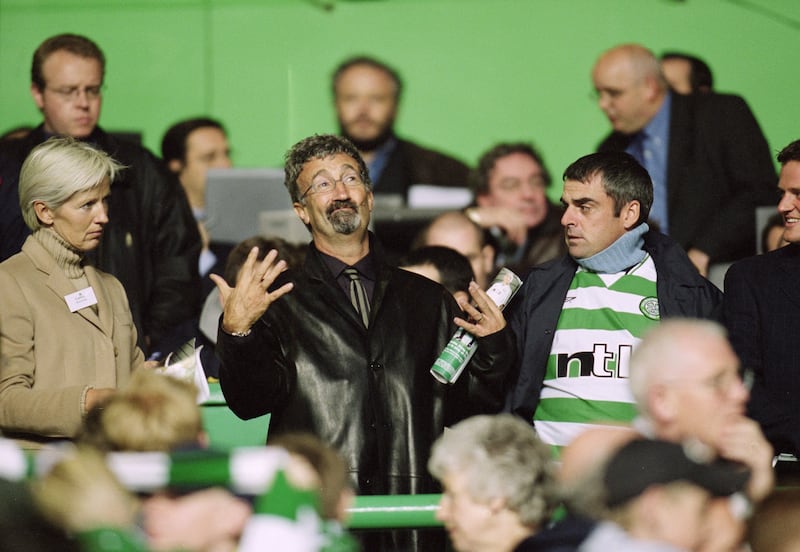Born March 30th, 1948
Died March 20th, 2025
Viewers of Netflix’s Drive to Survive have become accustomed to the modern Formula 1 world of enormous high-tech teams supported by armies of corporate sponsors and marketing, media and PR specialists. Eddie Jordan, who has died aged 76, represented a previous era of buccaneering individualists who made their own luck and built their teams in their own image.
“We were johnny-come-latelies, noisy, brash, having a good time, giving the establishment two fingers,” Jordan told Motorsport magazine. “So we got lots of attention, lots of value for our sponsors and a huge fan base.”
READ MORE
Jordan Grand Prix draped Page 3 models over cars and were the rock’n’rollers in the F1 paddock, not least because Jordan could frequently be seen flailing away behind his drum kit in his band Eddie’s Pitstop Boogie Boys or subsequently Eddie & the Robbers. He was good friends with rock stars including George Harrison, Mike Rutherford of Genesis, Chris Rea and John Lydon, and when Led Zeppelin staged their one-off reunion at London’s O2 Arena in 2007, Jordan was there.

But he was also a brilliant entrepreneur and dealmaker. He gave Michael Schumacher his first Formula 1 drive, and his efforts also ensured that Jordan came fifth in the World Championship in their debut year of 1991, a remarkable achievement for a fledgling independent team. During his team’s lifespan from 1991 to 2005, he employed numerous top drivers including Eddie Irvine, Rubens Barrichello, the 1996 world champion Damon Hill, Heinz-Harald Frentzen and Jean Alesi.
In 1998 Hill brought the team their first win at the Belgian Grand Prix, and Frentzen added two more the following year, helping Jordan to reach third place in the World Championship, their best performance. In 2003 Giancarlo Fisichella won the team’s final victory at Interlagos in Brazil.

Jordan was a close friend of F1’s eminence grise Bernie Ecclestone, and shared something of his deal-making instinct. In 1995 he made a small fortune by selling Irvine’s contract to Ferrari. He explained: “Irvine would come to me for free and I’d give him a three-year contract, and build him up, and build him up, and then sell him to Ferrari. He’d get 13 or 14 million and Ferrari would pay me five.” A big sponsorship deal with Benson & Hedges for the 1996 season prompted Jordan’s cars to turn yellow.
In 1998 Jordan sold half his shares to the private equity firm Warburg Pincus, then bought them back at a substantial profit. On Ecclestone’s recommendation, he sold Jordan Grand Prix to the billionaire Alex Schnaider for a reported $60 million, and in 2006 the team became Midland F1 (and would subsequently become Spyker and Force India before its latest iteration as Aston Martin).
He pulled off another entrepreneurial coup in 2024, when acting as manager for Adrian Newey, arguably the greatest car designer in F1 history. He negotiated Newey’s transfer from Red Bull to Aston Martin, based at Jordan’s original Silverstone site, for a rumoured salary of £30 million.
After selling his team, he had a media career as an F1 pundit, for BBC Sport’s Grand Prix programme from 2009, then for Channel 4’s F1 coverage from 2016. He presented Top Gear in 2016-2018, and in 2023 he and David Coulthard launched their podcast, Formula for Success.
We so nearly won the championship because we psyched Ayrton Senna, and he started to make mistakes
— Eddie Jordan on his team's standout season in F3 in 1983
Edmund Patrick Jordan was born in Dublin, the son of Paddy and Eileen Jordan. The family moved to Bray when he was 11 months, and even though they moved back to Dublin in his early teens, he retained a lifelong connection with the Wicklow town. His father was an accountant for the ESB, and his mother a housewife. He also had an older sister, Helen. “I was fortunate. I had a great upbringing. My parents strove very hard to make sure that I got a good education. And I didn’t want for anything,” he said in an interview with Hot Press magazine.
He attended Synge Street CBS, displaying early entrepreneurial flair by dealing conkers, marbles and school textbooks, and at one point considered becoming a priest. He briefly contemplated dentistry but then got a job in the Bank of Ireland. In 1970 a banking strike prompted him to move to Jersey to earn money, where he trained in accountancy and tried go-karting, becoming infatuated with it.
Following a move home, he pursued his karting hobby and was successful enough to win the Irish Kart Championship in 1971. He then moved up to Formula Ford (partly sponsored by a Dublin carpet shop), although he suffered a temporary setback when he broke both legs in a crash at the Mallory Park circuit in Leicestershire in 1975. He bounced back in Formula Atlantic, and won the Irish Formula Atlantic title in 1978.
He then moved to England and, now married to Marie McCarthy, a former basketball player for Ireland, tried his luck in Formula Three, but with little success. He decided to switch from driver to team owner, and formed Eddie Jordan Racing (EJR) in 1979.
The team enjoyed a standout season in F3 in 1983, when their driver Martin Brundle came a close second to the gifted Brazilian driver Ayrton Senna. “We so nearly won the championship because we psyched Senna, and he started to make mistakes,” Jordan said.

In 1987 Johnny Herbert won the British F3 title with EJR, then in 1989 EJR’s new signing, the French driver Alesi, won the F3000 title. Herbert had now entered F1 with the Benetton team, and Alesi followed suit with Tyrrell (assisted by Jordan’s sponsorship contacts with the Camel cigarette brand).
This inspired Jordan to make the leap to F1 himself. He assembled a team including the designer Gary Anderson, and attracted sponsorship from Marlboro, 7Up and bizarrely the Irish government, after he persuaded Charlie McCreevy, the then minister for sport, that it would be a good look for the country.
He signed up the drivers Andrea de Cesaris and Bertrand Gachot, who racked up some solid results before Gachot was involved in a bizarre road-rage incident at Hyde Park Corner in London in which he sprayed a taxi driver with CS gas. This earned Gachot a prison sentence, and as replacement Jordan signed Schumacher for his F1 debut.
Schumacher only drove once for Jordan, at Spa in Belgium, but his performance was so sensational that he was scooped up by the Benetton team, even though Jordan apparently had a watertight contract with him. The episode highlighted the Machiavellian politics lurking behind the glamorous facade of F1.

Jordan had numerous interests outside motor racing, building up a substantial property portfolio as well as being a shareholder in Celtic FC and co-owner of the London Irish Rugby Club. He had investments in gaming and entertainment businesses, was the patron of several charities, and launched his own V-10 vodka and the energy drink EJ-10. He also owned several luxury yachts.
His autobiography, An Independent Man, was published in 2007.
Even though he lived primarily in the UK since the 1980s, he retained close ties with Ireland. There were many tributes from the Irish business, sport and music communities upon his death, including from his friend Bono. “The gift from the gods with the gift of the gab. A heart as big as his mouth, and that mouth was large,” said the U2 frontman in a video released on social media.
“Living for love, laughter, noise, speed and loyalty. The man was Irish royalty. Eddie was a joy. Eddie brought joy. I will – we will – miss you. No one could keep up with you, in this life or the next.”
He is survived by Marie and their children, Zoe, Miki, Zak and Kyle.














